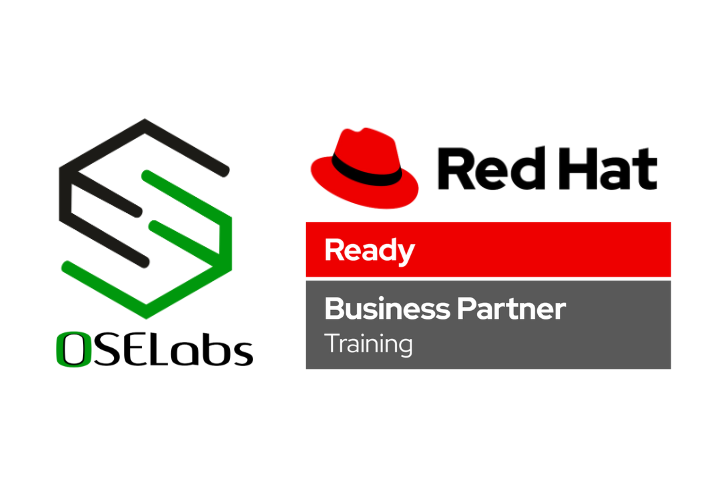Red Hat OpenStack Training
Red Hat OpenStack Administration
OpenStack is an open source platform that uses pooled virtual resources to build and manage private and public clouds. The tools that comprise the OpenStack platform, called “projects,” handle the core cloud-computing services of compute, networking, storage, identity, and image services.
50,000+
Students Certified
Beginner
Skill Level
Offline & Online
Course Trained
Red Hat Cerrtified
Trainer
Overview
Our Red Hat OpenStack Administration course is designed to provide you with the knowledge and skills needed to install, configure, and manage Red Hat OpenStack Platform. This course covers the essential concepts and techniques of OpenStack administration, including deploying and scaling applications, managing resources, and securing the OpenStack environment.
Completing this course will help you
- Become a proficient OpenStack administrator with the ability to install, configure, and manage Red Hat OpenStack Platform.
- Gain a comprehensive understanding of OpenStack's capabilities and best practices for administration, enabling you to create more efficient and effective cloud-based solutions.
- Prepare for the Red Hat Certified System Administrator in OpenStack certification exam, which validates your expertise in OpenStack administration and demonstrates your proficiency in the platform.
Who is the course for?
This course is ideal for system administrators, DevOps engineers, and IT professionals who are responsible for deploying and managing cloud-based solutions. Prior experience with Linux and virtualization technologies is recommended, but no prior experience with OpenStack is required.

Companies Recruiting for Red Hat OpenStack
Top Recuriters





CL110
Red Hat OpenStack Administration I: Core Operations for Domain Operators
The best way to learn is to do
Learn to operate a Red Hat® OpenStack Platform private cloud and manage domain resources to secure and deploy modern, scalable cloud applications, networks and storage
Red Hat OpenStack Administration I: Core Operations for Domain Operators (CL110) teaches you how to operate and manage a production Red Hat OpenStack Platform (RHOSP) single-site overcloud. You will learn how to create secure project environments in which to provision resources and manage security privileges that cloud users need to deploy scalable cloud applications. You will learn about OpenShift integration with load balancers, identity management, monitoring, proxies, and storage. You will also develop more troubleshooting and Day 2 operations skills in this course.
This course is based on Red Hat OpenStack Platform 16.0.
Course content summary
Students in the Red Hat OpenStack Administration I: Core Operations for Domain Operators (CL110) course will focus on performing both routine and specialized tasks that are necessary to manage a production OpenStack overcloud domain. Students will manage OpenStack using both web-based and command-line interfaces. Essential skills covered in the course include the following:
- Launch instances to satisfy various use case examples.
- Manage domains, projects, users, roles, and quota in a multitenant environment.
- Manage networks, subnets, routers, and floating IP addresses.
- Manage instance security with group rules and access keys.
- Create and manage block, object and shared storage within OpenStack.
- Perform instance launch customization with cloud-init.
- Deploy scalable applications using stack templates.
Audience for this course
This course is designed for cloud users who deploy application instances and stacks, domain operators who manage resources and security for cloud users, and any other cloud personnel interested in, or responsible for, maintaining applications on private or hybrid OpenStack clouds. Any cloud persona, or personnel with roles that include performing technology evaluation, should attend this course to learn RHOSP operation and application deployment methods.
Prerequisites for this course
- Become a Red Hat Certified System Administrator (RHCSA) or demonstrate equivalent experience
- If you are not a RHCSA, you can take a skill assessment to gauge your level of knowledge.
Introduction to Red Hat OpenStack Platform
- Describe OpenStack personas, launch an instance, and describe the OpenStack components and architecture.
Manage application projects in a multitenant cloud
- Create and configure projects with secure user access and sufficient resources to support cloud user application deployment requirements.
Manage OpenStack networking
- Describe how IP networks are implemented in OpenStack, including fundamental TCP/IP stack behavior, software-defined networking elements, and the common types of networks available to self-service cloud users.
Configure resources to launch a non-public instance
- Configure the requisite resource types for launching a basic non-public instance, including vCPUs, memory, and a system disk image, and launch an instance of an application component that runs in a tenant network with no public access.
Configure virtual machine system disks
- Identify the available choices for configuring, storing and selecting block-based virtual machine (VM) system disks, including the choice of ephemeral or persistent disks for specific use cases.
Provide additional storage strategies
- Identify the available choices for additional cloud storage techniques, including object-based storage, network file sharing, and volumes sourced from a file sharing service.
Configure resources to launch an instance with public access
- Identify and configure the additional resource types required to launch instances with public access for specific use cases, including networking and access security elements.
Automate customized cloud application launches
- Configure and deploy a typical multi-tier cloud application stack, defined as an architected template of scalable VM instances, including per-instance launch customizations.
Manage cloud application placement
- Introduce overcloud layouts more complex than a single site, and explain the management resources to control the placement of launched instances, including segregation elements such as cells and availability zones, and placement attributes such as requisite compute node resources.
Note: Course outline is subject to change with technology advances and as the nature of the underlying job evolves. For questions or confirmation on a specific objective or topic, contact one of our Red Hatters.
Impact on the organization
This course is intended to develop the skills needed to utilize and manage the daily operation of a private cloud. A private cloud can reduce costs through fine-grained resource control, simplifying regulatory compliance, and permitting easier integration with legacy systems. Using the skills taught by this course, users and operators will be able to create and use project resources built of networks and services running running templated applications, in customizable and adaptable configurations, virtually eliminating the need to build physical systems for any new projects. This release brings major enhancements and stabilization, including service containerization, new installation and management tools, a newly designed application load balancing component, and a significant expansion of features supported by the OpenStack CLI. Also, clients can use various installation tools, most noticeably PackStack, which is completely deprecated.
Red Hat has created this course in a way intended to benefit our customers, but each company and infrastructure is unique, and actual results or benefits may vary.
Impact on the individual
As a result of attending this course, you will understand the architecture of a private or hybrid OpenStack cloud infrastructure and will be able to create, manage, and troubleshoot software-defined network services, resources, servers, and applications for dynamically scalable business environments.
You should also be able to demonstrate these skills:
- Design and implement on-demand projects, software-defined networks, and virtual machine instances.
- Deploy a proof-of-concept OpenStack installation for practice, development, demonstration, and testing, back in your own home or business computing environment.
- Manage software-defined networks such as subnets, routers, floating IP addresses, images, flavors, security groups/rules, and block and object storage.
- Create and customize advanced VM instances as applications, customize on deploy, and create scalable stacks of multiple VM applications.
Recommended next exam or course
- Red Hat Preliminary Exam in Red Hat OpenStack Administration (PE110)
- Red Hat OpenStack Administration II (CL210)
- Red Hat Ceph Storage Architecture and Administration (CEPH125)
CL210
Red Hat OpenStack Administration II: Day 2 Operations for Cloud Operators
Build advanced skills for performing Red Hat OpenStack Platform day 2 operations and management of hybrid cloud infrastructure
Red Hat OpenStack Administration II: Day 2 Operations for Cloud Operators (CL210) is designed for cloud operators, service administrators, and automation engineers who operate and manage a full-featured hybrid and private cloud-computing environment using Red Hat OpenStack Platform. You will learn how to manage, monitor, troubleshoot, and scale a Red Hat OpenStack Platform infrastructure. This course focuses on using the OpenStack Client command-line user interface to configure metrics, policies, and architecture in order to support enterprise cloud applications and daily operations.
This course is based on Red Hat OpenStack version 16.1 and Red Hat Enterprise Linux version 8.2
Course content summary
- Managing overcloud service containerization technology.
- Providing metrics for performance tuning and governance.
- Monitoring and troubleshooting Open Virtual Networking (OVN) network flow.
- Configuring Identity service using an external Red Hat IdM store.
- Managing the core control plane, including Pacemaker.
- Customizing images, with techniques for multiple use cases.
- Managing block and object storage back-ends.
- Managing compute nodes, including tuning and hyperconverged.
- Troubleshooting Red Hat OpenStack Platform.
Audience for this course
- Cloud operators responsible for managing daily operations and automation.
- Infrastructure architects interested in or responsible for maintaining a large-scale private or hybrid cloud.
Prerequisites for this course
- Be a Red Hat Certified Engineer (RHCE), Red Hat Certified Specialist in Ansible Automation, or demonstrate equivalent experience.
- For candidates that have not earned an RHCE or equivalent, confirmation of the correct skill-set knowledge can be obtained by taking our free assessment to gauge whether this offering is the best fit for your skills.
- Attend Red Hat OpenStack Administration I: Core Operations for Domain Operators (CL110), or demonstrate equivalent experience.
Technology considerations
- There are no current special requirements or technical considerations.
- No BYOD support.
- No Internet access required.
Navigate the Red Hat OpenStack Platform architecture
- Describe the undercloud and overcloud architecture and service components.
Operate the control plane
- Describe and manage the critical core services of the Red Hat OpenStack Platform control plane.
Manage infrastructure security
- Protect the Red Hat OpenStack Platform infrastructure by securing service component files and endpoints.
Manage user security
- Configure secure user privileges using domain-based identity management, scoped roles, and project organization.
Manage application deployment resources
- Create and manage the common, shared deployment resources including custom images, flavors, and metadata services.
Manage storage
- Describe and manage storage architecture and components, with an emphasis on Red Hat Ceph Storage back ends.
Manage networking
- Create, manage, and troubleshoot data center and virtual network infrastructure.
Manage compute node operations
- Describe the architecture and management processes for normal and hyperconverged compute nodes. Perform common operational tasks for compute nodes to support workload uptime and scaling.
Monitor Red Hat OpenStack Platform operations
- Describe the monitoring framework and architecture to gather, store, and use operational metrics.
Automate cloud applications
- Implement and deploy complex and scalable applications using automation technologies.
Troubleshoot operations
- Describe and practice the tools and methods for diagnosing and troubleshooting issues encountered during deployment and management operations.
Comprehensive review
- Review tasks from Red Hat OpenStack Platform Administration II: Day 2 Operations for Cloud Operators.
Impact on the organization
This course is intended to develop the skills needed for the daily operation of a private cloud. A private cloud can reduce costs through fine-grained resource control, simplifying regulatory compliance, and permitting easier integration with legacy systems. Using the skills taught in this course, cloud operators will be able to manage and operate hybrid cloud Red Hat OpenStack Platform infrastructure.
Customer organizations will find this version to be easier to install and manage while handling more diverse types of cloud and legacy workloads with an expanding portfolio of flexible resource configuration. Enhancements in the RHOSP 16 version address evolving customer requirements for enterprise cloud infrastructures:
- Industry-popular Ansible Automation for installation, upgrading, and patching.
- Open Virtual Networking (OVN), an advanced SDN framework evolved from Open vSwitch.
- Hyperconverged technology, combining storage and compute resources for lower latency and higher performance.
Red Hat has created this course in a way intended to benefit our customers, but each company and infrastructure is unique, and actual results or benefits may vary.
Impact on the individual
Course attendees will learn how to operate and manage a Red Hat OpenStack Platform installation using all of the common core features and services used by enterprise private/hybrid cloud customers. Successful attendees will be able to monitor, troubleshoot, and automate operations handling compute, storage, networking, deployment, and application support resources and services tailored to their enterprise needs.
Recommended next exam or course
- Red Hat Certified Specialist in Cloud Infrastructure exam (EX210)
- Red Hat OpenStack Administration III: Distributed Architecture and Scaling For Edge Computing (CL310)
- Red Hat Certified Specialist in Edge Computing and Networking exam (EX310)
What people are saying
2. Trainers guiding for students real time technology.
3. Everyone in this office will guide students and experienced students

